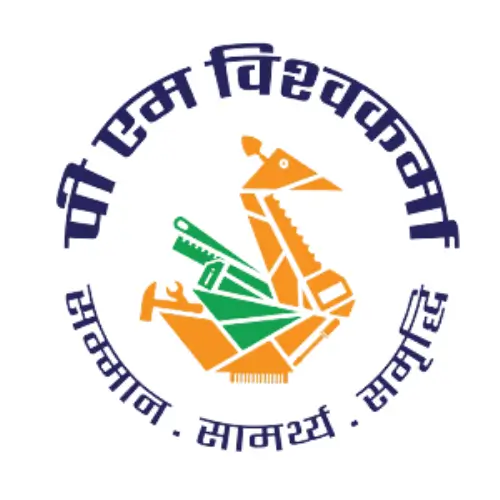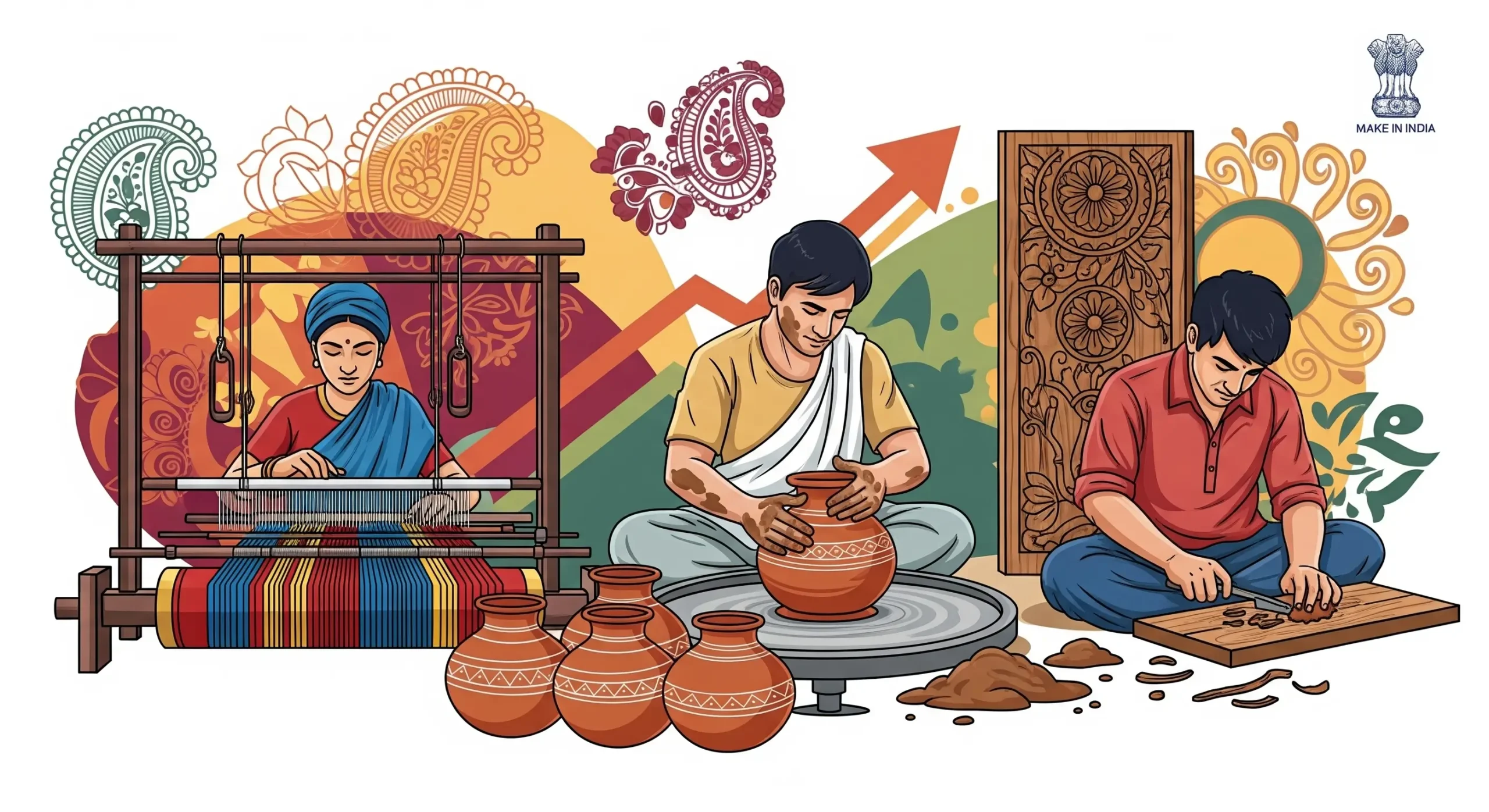Central Government Schemes in 2025 are playing a vital role in transforming the lives of India’s artisan community. From handloom weavers to carpenters, potters, and metalworkers, artisans have long been the torchbearers of India’s cultural identity. But despite their skills, many face daily challenges—limited income, lack of formal recognition, outdated equipment, and little exposure to modern markets. In response, the government has launched a range of targeted initiatives to support and empower artisans in every corner of the country.
These schemes are not just financial support programs—they are part of a larger strategy to integrate traditional skills into the mainstream economy. With a focus on sustainability, digital access, and entrepreneurship, artisans now have more pathways than ever to grow, compete, and thrive.
₹3 Lakh Loan Under PM Vishwakarma Yojana
PM Vishwakarma Yojana 2025 Tools, Training, and Loans
Among the most impactful Central Government Schemes is the PM Vishwakarma Yojana. This scheme supports traditional artisans engaged in 18 heritage trades such as blacksmithing, carpentry, weaving, and shoemaking. In 2025, the scheme has been expanded with a sharper focus on skilling and entrepreneurship.
Under this scheme:
- Eligible artisans receive ₹15,000 to upgrade or purchase modern tools.
- Certified training is offered at no cost, along with a daily stipend during training.
- Beneficiaries can access loans up to ₹3 lakh in two phases at subsidized interest.
Applications are accepted year-round, with outreach efforts conducted quarterly across districts to maximize accessibility.
PM Vishwakarma Yojana Online Apply 2025 Step-by-Step Registration
Financial Inclusion through Artisan Credit Support
Artisans often lack access to formal credit due to their unregistered status or absence of collateral. Several Central Government Schemes now offer secure, low-barrier loan options tailored to their needs. These financial initiatives aim to promote independence, scalability, and business formalization among artisans.
In 2025, artisans can benefit from:
- Collateral-free business loans with simplified documentation.
- Flexible repayment options aligned with production cycles.
- Access to local financial literacy workshops to build confidence in managing funds.
This has helped thousands of artisans move beyond survival-level work and toward sustainable business ownership.
Cluster-Based Assistance for Artisan Communities
Instead of focusing only on individuals, some schemes now operate at a community or cluster level. This approach allows entire groups of artisans—especially in rural or semi-urban areas—to benefit from shared infrastructure, marketing support, and knowledge exchange.
Support through these schemes includes:
- Setting up shared workspaces, design labs, and raw material banks.
- Hands-on training in product innovation and modern design techniques.
- Participation in national craft fairs, exhibitions, and trade summits.
Clusters also serve as a foundation for artisan-led cooperatives and small enterprises.
PM Kisan 20th Installment Date 2025 Beneficiary List
Special Schemes for Minority and Tribal Artisans
The government has continued its commitment to ensuring inclusive development through schemes focused on minority and tribal artisans. These initiatives are especially significant in regions where traditional art forms are at risk of disappearing.
In 2025, these schemes offer:
- Short-term and long-term training tailored to traditional crafts.
- Monthly stipends during training periods to ensure income continuity.
- Guidance on product branding, packaging, and online selling.
These efforts help bridge the gap between rural artisans and national or global buyers.
District-Focused Craft Promotion Through ODOP Framework
Aligned with the One District One Product (ODOP) framework, Central Government Schemes now give added emphasis to promoting unique, district-specific crafts. This initiative helps artisans develop a stronger brand identity, improving both income and recognition.
The ODOP-aligned benefits include:
- Dedicated support cells at the district level for product development.
- Grants for marketing, packaging, and certification.
- Linkages with export houses and digital marketplaces.
This district-level focus brings the artisan economy closer to global value chains.
PM Vishwakarma Yojana Required Documents
Eco-Friendly Craft Production and Renewable Energy Use
In line with India’s climate goals, several schemes now reward artisans adopting sustainable practices. From using solar-powered tools to switching to natural dyes, eco-conscious production is becoming both a market advantage and a funding priority.
Support available in 2025 includes:
- Subsidies on solar charkhas, wheels, and looms.
- Assistance in transitioning to organic raw materials.
- Recognition and promotion of sustainable craft clusters.
This ensures artisans not only protect their tradition but also the environment.
PM Vishwakarma Yojana Eligibility Criteria
Central Government Schemes for Artisans 2025
| Scheme / Program | Primary Focus | Benefits Offered | Deadline / Availability |
|---|---|---|---|
| PM Vishwakarma Yojana | Tools, training, loans | ₹15,000 toolkit, training stipend, ₹3 lakh credit | Open year-round |
| Artisan Credit Support | Financial inclusion | Collateral-free loans, flexible terms | Continuous enrollment |
| Cluster-Based Development | Group support & infrastructure | Shared tools, design training, exhibitions | Region-wise implementation |
| Minority & Tribal Artisan Support | Inclusion and heritage protection | Training, stipends, digital access | Annual cycles |
| ODOP Craft Promotion | District-specific product branding | Marketing aid, export links, packaging grants | State-wise scheduling |
| Green Tools & Sustainable Production | Eco-friendly craft manufacturing | Equipment subsidy, eco-certification support | Project-based approvals |
Conclusion
As India moves forward in 2025, the support offered through Central Government Schemes is more focused, inclusive, and forward-looking than ever before. These programs not only uplift artisans financially but also place their crafts on a larger stage—connecting them to new markets, modern tools, and lasting recognition. For any artisan hoping to expand their skills, grow their income, or protect their tradition, now is the time to take full advantage of these schemes. The future of Indian craftsmanship depends not only on skill but on the systems built to sustain it—and these schemes are building exactly that.

